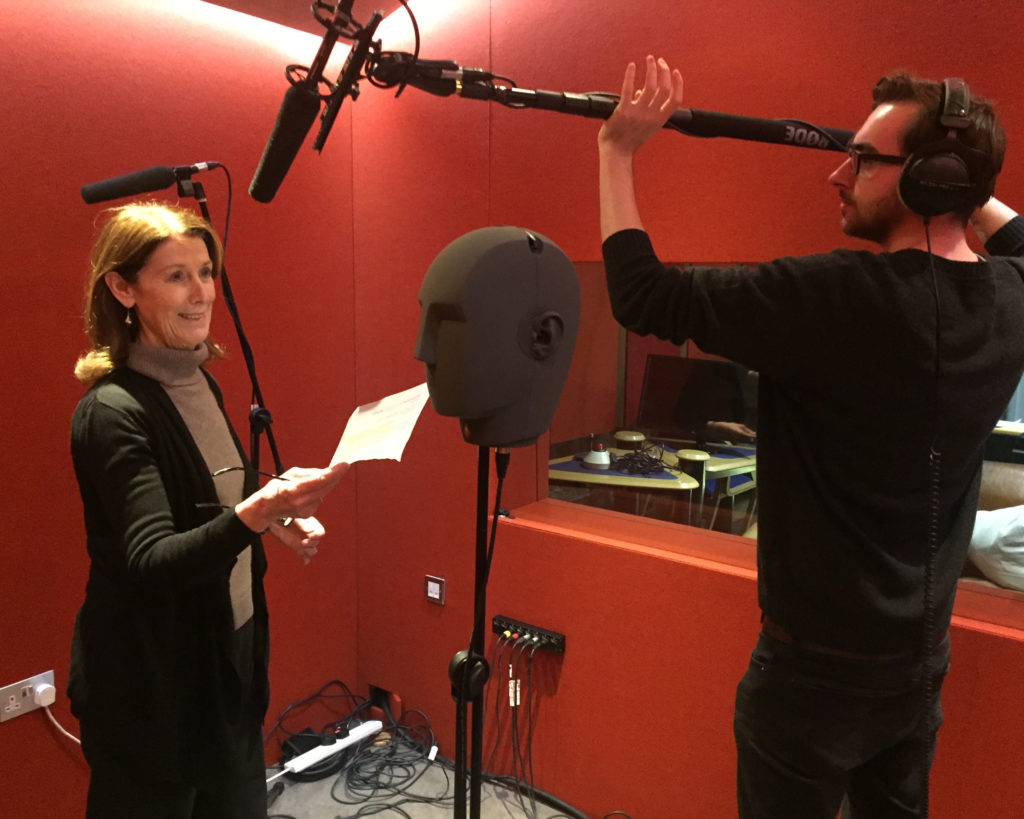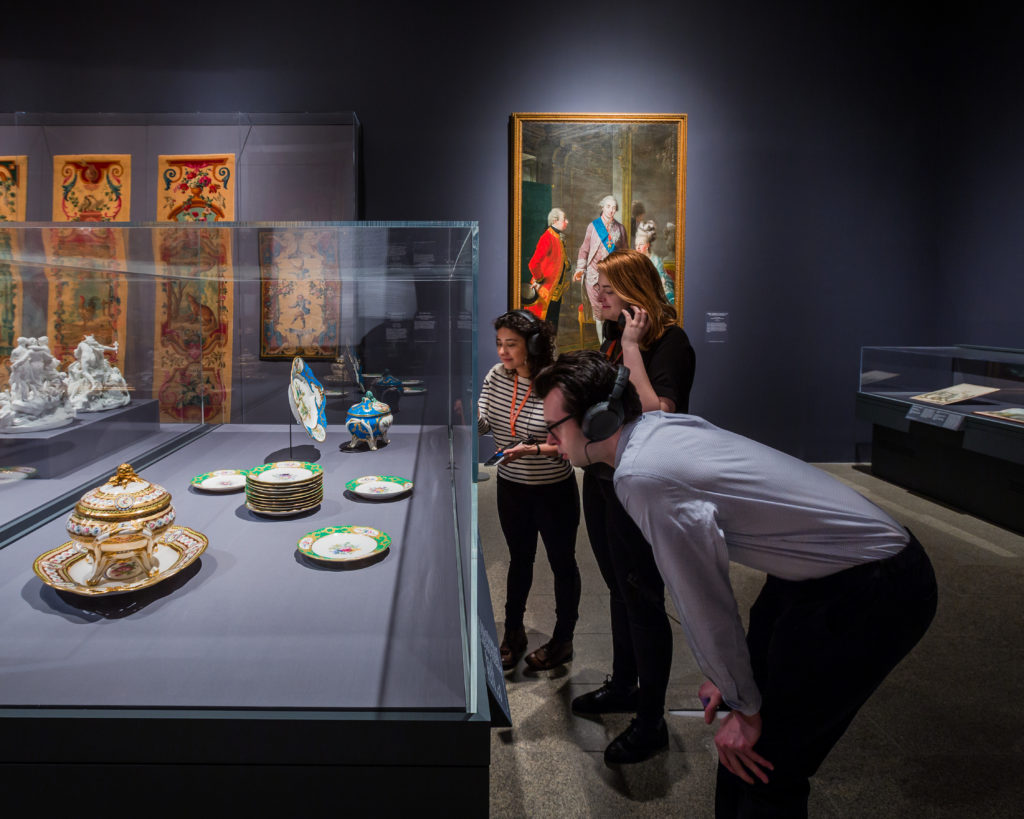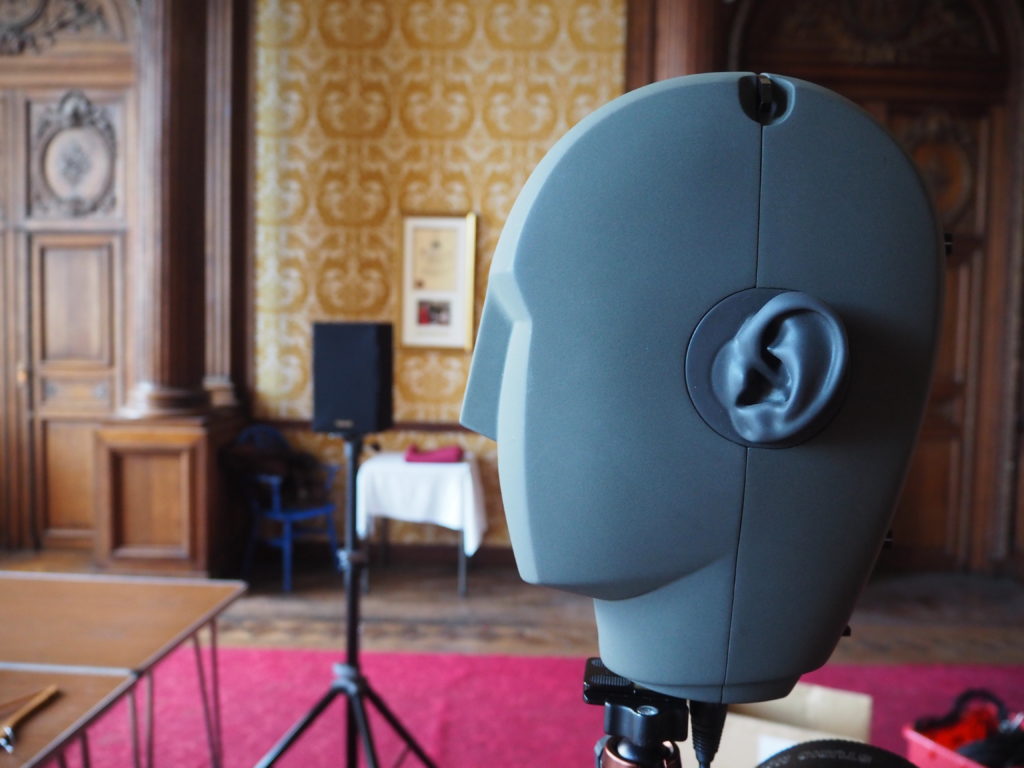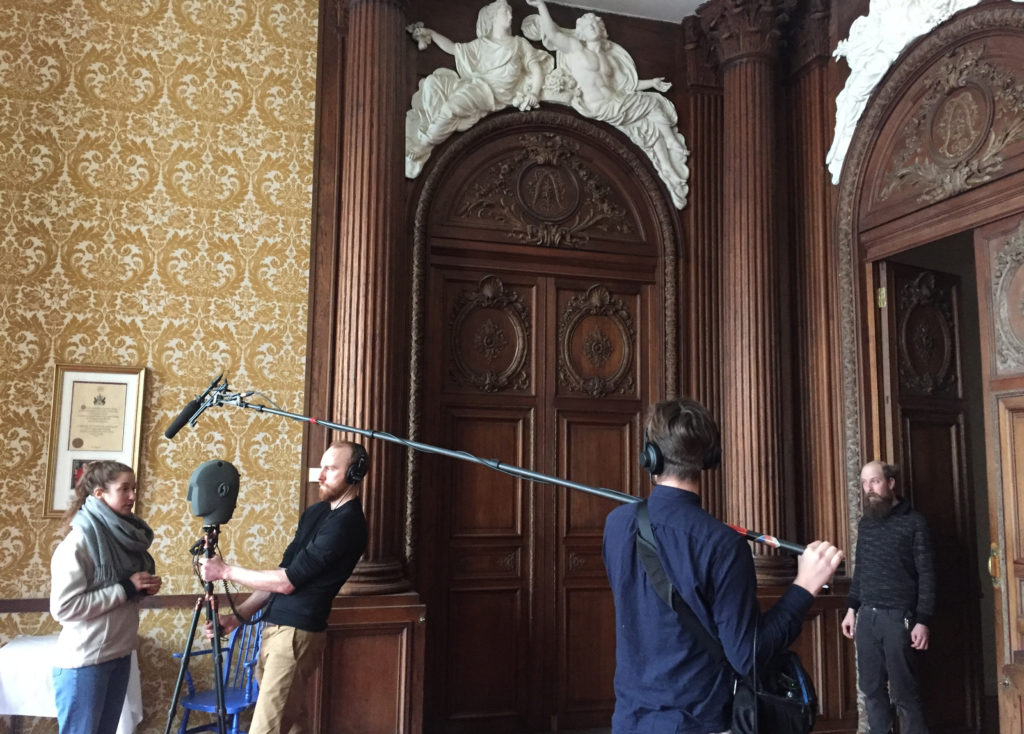This is an interview with Nina Diamond about a special exhibition entitled Visitors to Versailles that took place at the Metropolitan Museum of Art in New York. Nina is a Managing Editor and Producer in the Digital Department at the Metropolitan Museum of Art in New York. Previously, she created award-winning digital media for The J. Paul Getty Museum in Los Angeles. Her experience as a writer, director, and producer of multimedia projects spans binaural audio, 360° video, interactive productions, animation, feature film, and TV.

Designing Sound: Many exhibitions include audio tours these days. What makes this one unique and special?
Nina Diamond: This is called an “audio experience” for a reason; it’s not a typical audio tour in any way: from overall approach, to content, to recording methods—on all these fronts The Met broke ground from production of typical audio tours. While remaining devoted to the larger interpretive goals of the exhibition—namely, to share the experience of historic visitors—the audio experience also sought to surprise and delight visitors with fresh interpretation that encouraged a richer engagement with the objects on display.
This immersive audio experience brings to life the impressions of those who visited the palace and court of Versailles in the seventeenth and eighteenth centuries. It presents adaptations of their actual written accounts, dramatized within atmospheric 3-D soundscapes.
Instead of a traditional audio guide’s commentary by experts about specific objects (one at a time), this audio experience is “hosted” by royalty, ambassadors, architects, travel writers, and tourists—in their own words—and delivered in two-to-four minute soundscapes that are designed for listening while moving throughthe galleries (much like historic visitors to the palace). Listeners have the sense of being “virtually accompanied” by those speaking in part due to the use of unique binaural audio recording methods.
Hearing gossip, complaints, awe—in first-person accounts that are genuine, human—draws listeners right into that lived experience. It’s one thing to look at beautiful objects, and to enhance one’s appreciation of them through the remarkable scholarship of the curators, and the imaginative design and presentation by the Museum designers. But to move through those curated and designed spaces while hearing from those who actually lived it, those who actually used those objects, wore those clothes—that’s unique. The use of binaural recording methods was the cherry on top: it gives the uncanny sense that the listener shares physical space with those speaking. We had visitors tell us that it brought the objects alive in a whole new way, with a richer, more vivid understanding of context, and made them want to spend more time looking at what was on display. That’s an experience, not a tour.

DS: Have you attempted anything like this before?
ND: For decades, I’ve been producing media of many stripes, and even a full length indie feature film for kids, but this project was unique. And uniquely challenging! Instead of interviewing experts about objects, the curators helped my team cull the first-person accounts of 17thand 18thcentury visitors, which I then crafted into a script as if the visitors are speaking to one another. We cast a dozen actors whose nationality, age, and spirit seemed most closely aligned with those exact historic figures. A traditional audio tour at The Met is not theatrical, and I’m very grateful to the actors for bringing the accounts alive in such a charming, compelling, but always authentic way. Everything spoken in the audio experience was fully grounded in scholarship, as were the post production effects—sometimes as many as 30-40 layers of sound in an edited soundscape, each recorded and crafted using a number of different binaural recording methods and software programs.
In that regard, the rigor of production standards was aligned with typical Met standards: the facts come first. Take the music, for example: every piece listeners hear in this audio experience dates to the correct time period, even down to composers whose work is actually documented as having been performed at the palace. But the complexity of the project, and the experimentation involved was indeed new (and cool!) territory for our team.
DS: How long is the whole audio tour from start to finish and how long did it take to produce?
ND: 31 minutes total. There are 10 distinct soundscapes of 2-4 minutes each in length, each themed to the specific theme of a particular gallery.
The production timeline—from the initial conversations to launch—took over a year. But we did not begin production in earnest until about 6 months prior to the opening of the exhibition. It was the careful planning in preproduction and the skill and dedication of all those involved that allowed us to record in less than two weeks, and to complete editing in less than a month.
DS: How was it working with the team from Aurelia Soundworks UK?
ND: Delightful. We interviewed a number of potential production partners before selecting Aurelia. There were several key issues at stake, not including budget and timeline: One, we wanted them to be as excited as we were about the creative challenges—not for us to be “just another client” or corporate product launch. Two, they needed to understand the delicacy of the creative vision and particularity of our audience and taste; this is The Met, after all, and we envisioned work that was both rigorously grounded in scholarship and yet dynamic and immersive—but all produced in an elegant way. Collaboration is tremendous when it works because the whole is greater than the sum of its parts.

DS: I understand there were some sounds recorded in specific locations?
ND: We recorded some of the narration in studio, using a binaural recording head. We also recorded more narration on location again with the binaural head. Unbelievably, there is a mansion in Devon, UK that contains rooms modeled after those at Versailles. We recorded, for example, on a vast marble staircase that is a model of the Ambassador’s Staircase at the palace of Versailles, and in a long, parquet-floored gallery modeled on the Hall of Mirrors. These spaces have very distinct “sound footprints” that give the final recordings a remarkable immediacy and authenticity. The team also used “worldizing” techniques (with playback of binaural recordings) in those spaces to give the final product a deeper level of believability and impact.

DS: What about the binaural effect made you think it would be well suited to this exhibition?
ND: From the moment I learned about binaural recording methods, which have actually been around for decades, I knew it was perfect suited for the bigger goals of this project. How better to bring alive a faraway time period and the unique physical spaces that were such a key part of being a visitor to Versailles? This recording method yields results that are uniquely immersive and visceral; the audio experience makes you feel “you are there.”
DS: How does the experience of going through the exhibition with the audio tour change one’s experience?
ND: We did a user study of 100 people in the gallery in addition to pop-up questions of visitors that all gave us some interesting feedback. In a nutshell: a very positive response. Initially people were often surprised and said things like: “I didn’t know what was going on! I thought someone was right behind me whispering in my ear!”
It was important than they figured out how the experience worked—that they could look and move freely as they explored, and that they were in control of stopping and starting as they wished. Some visitors described being “disappointed” when the experience ended because they had been so immersed in the story and “didn’t want it to end.” This included visitors of all ages, including children. One woman told me she cried when listening to the final soundscape when the mob descends on Versailles and the royal court is forcibly taken to Paris!
We were impressed to hear that the audio experience positively affected visitors’ experience of the exhibition itself. One visitor, for example, shared the following feedback:
“The Versailles audio experience was truly unique—I found it really allowed me to let my own imagination kick in, making the gallery experience far less passive. I let the audio play as [I] wandered around the galleries with somewhat of an unfocused gaze. The actual objects floated in and out as confirmation of what my mind’s eye was already seeing. I actually really enjoyed the decentering of the objects in favor of my own imagination. Definitely a new way of moving through museums for me.”
Importantly, observation seemed to confirm that visitors who listened to the audio experience spent more time in the exhibition than those who did not, often listening to the 2-4 minute soundscape first while wandering the gallery, then going back though the gallery again, looking closely at the objects and reading labels with a greater interest. Some commented that they appreciated that the content of the audio experience was wholly different from the text on the gallery walls and the object labels, yet referenced specific objects, and portraits of people in the rooms.

DS: How did people react to the tour, did most opt to experience the exhibition with the audio?
We’re still waiting for final numbers on what percentage of visitors chose to listen to the tour out of the total number of visitors, but the numbers of listeners is well over 100,000, with more online. The Met offered this audio experience free to all visitors, a decision which stemmed from the curator’s belief that this experience was integral to the exhibition. User studies indicate some visitors returned and brought others—including children—back with them because they’d enjoyed it so much the first time.
A very small percentage of people voiced dislike of the audio experience or stopped listening because they found it distracting, annoying, or not related to what was on view. Some did not understand that the binaural sound was different from stereo sound, and others stopped listening entirely. This didn’t surprise us—to present something new and unique is to invite strong opinions. But what was striking was the remarkably small size of this group.
DS: Can we expect similar audio tours to accompany exhibitions in the future?
ND: We’ve had such a positive response to this tour, and so much fun making it, that we’re now actively exploring how to use this approach to storytelling and this particular recording method to bring alive The Met’s permanent collection. There is so much potential to bring alive the wonder of the collection this way, and we’re excited to get started. Watch this space!
Thank you to Nina and her team for taking the time to answer our questions.
To listen to all 10 soundscapes in the binaural audio experience, you can visit this link here. And if you’d like to learn more about the exhibition, here are two blog posts on the subject…
Eavesdropping on History: The Ideas behind The Met’s First 3-D Audio Experience